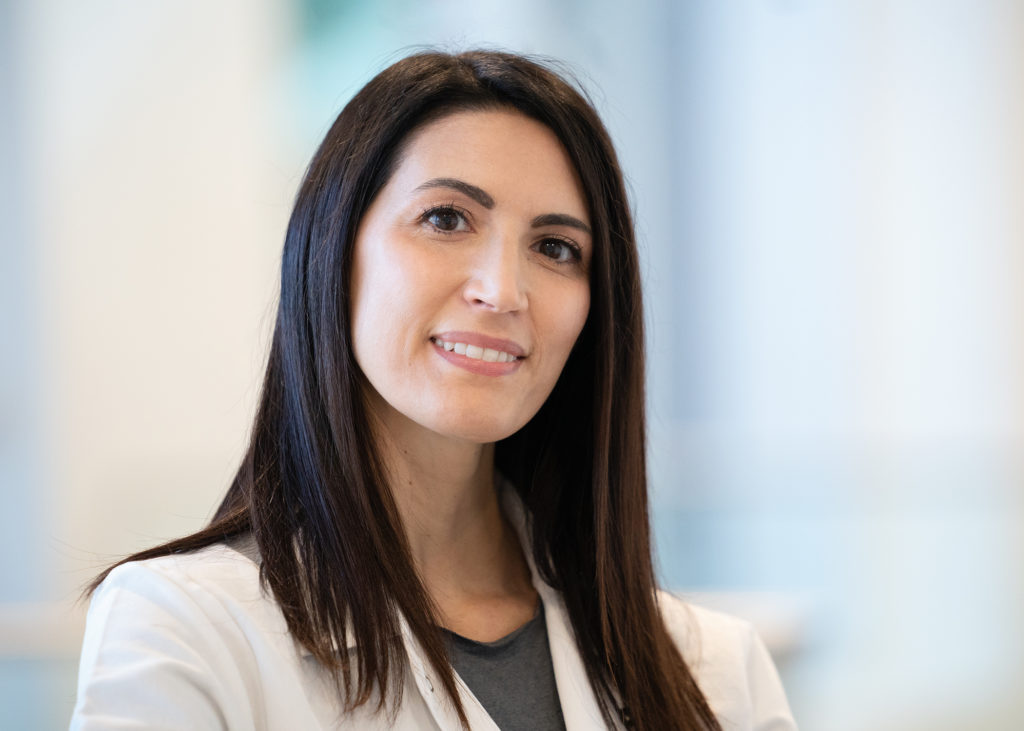The researchers conducted whole genome sequencing and transcriptome sequencing (RNA-seq) on 598 adults with AML and 706 with MDS. The researchers found evidence to support several different biologic subgroups. They found sets of mutations that cooperate to drive the development of leukemia and predict poor outcomes as well as groups of mutations that indicate positive responses to treatment.
“These diseases have a complex genomic background that we cannot ignore if we want to treat these patients optimally,” said first author and presenter Ilaria Iacobucci, Ph.D., of the St. Jude Department of Pathology. “Therapy for AML has changed little in the last five decades so we need to better understand the nature of genomic changes in order to offer new therapies to these patients.”
Our understanding of the genetics of these diseases has advanced dramatically in the last decade due to intensive sequencing efforts. However, most of these studies used a targeted sequencing-based approach or were limited to specific subtypes. Now, by integrating whole genome and transcriptome sequencing, researchers can further unravel the biology of these diseases.
AML and MDS are similar since they both derive from aberrations occurring in hematopoietic stem cells and cause impaired differentiation. However, the diseases differ in immature white blood cell (blast) counts and cell morphology. The researchers wanted to learn more about how the diseases divide into genetic subgroups to inform treatments based on their biology.
“This work lifts a veil on the constellations of mutations that come together to drive groups of cases that have similar or differing behavior,” said co-senior author Charles Mullighan, M.D., MBBS, of the St. Jude Department of Pathology and deputy director of the Comprehensive Cancer Center. “It strongly supports the way the field is moving, that unbiased sequencing is needed to accurately diagnose and risk-stratify our patients.”
“For all types of leukemia, we struggle with piecing together information from sequencing approaches to find the best predictors of outcome,” Mullighan said. “There is data here that brings clarity to prognosis, which may ultimately help in identifying patients upfront in need of more or less therapy.”
The findings demonstrate how different mutation patterns contribute to the growth of leukemia cells. For example, prognosis is generally considered quite good for patients whose disease has an NPM1 mutation. The researchers found that this subgroup can be further divided based on the presence of other mutations to indicate who is most likely to have a favorable response and thus might not require as stringent a treatment regimen.
The work also reveals a new finding regarding AML fueled by RUNX1 mutations. These mutations have only provisionally been considered a distinct subgroup by World Health Organization classification. Yet, the new results show that RUNX1 AML is a distinct subtype with a poor prognosis.
“We all feel the assessment is incomplete when you’re just looking at the number of cancer cells under a microscope,” said co-senior author Torsten Haferlach, M.D., of Munich Leukemia Laboratory. “We now have the options and ability to move forward, addressing all of the known targets and expression patterns that are present in these cases. Ours is the first study of this size showing this is feasible and applicable for routine clinical use.”
St. Jude Children’s Research Hospital
St. Jude Children’s Research Hospital is leading the way the world understands, treats and cures childhood cancer and other life-threatening diseases. It is the only National Cancer Institute-designated Comprehensive Cancer Center devoted solely to children. Treatments developed at St. Jude have helped push the overall childhood cancer survival rate from 20% to 80% since the hospital opened more than 50 years ago. St. Jude freely shares the breakthroughs it makes, and every child saved at St. Jude means doctors and scientists worldwide can use that knowledge to save thousands more children. Families never receive a bill from St. Jude for treatment, travel, housing and food — because all a family should worry about is helping their child live. To learn more, visit stjude.org or follow St. Jude on social media at @stjuderesearch.
Original post https://alertarticles.info



